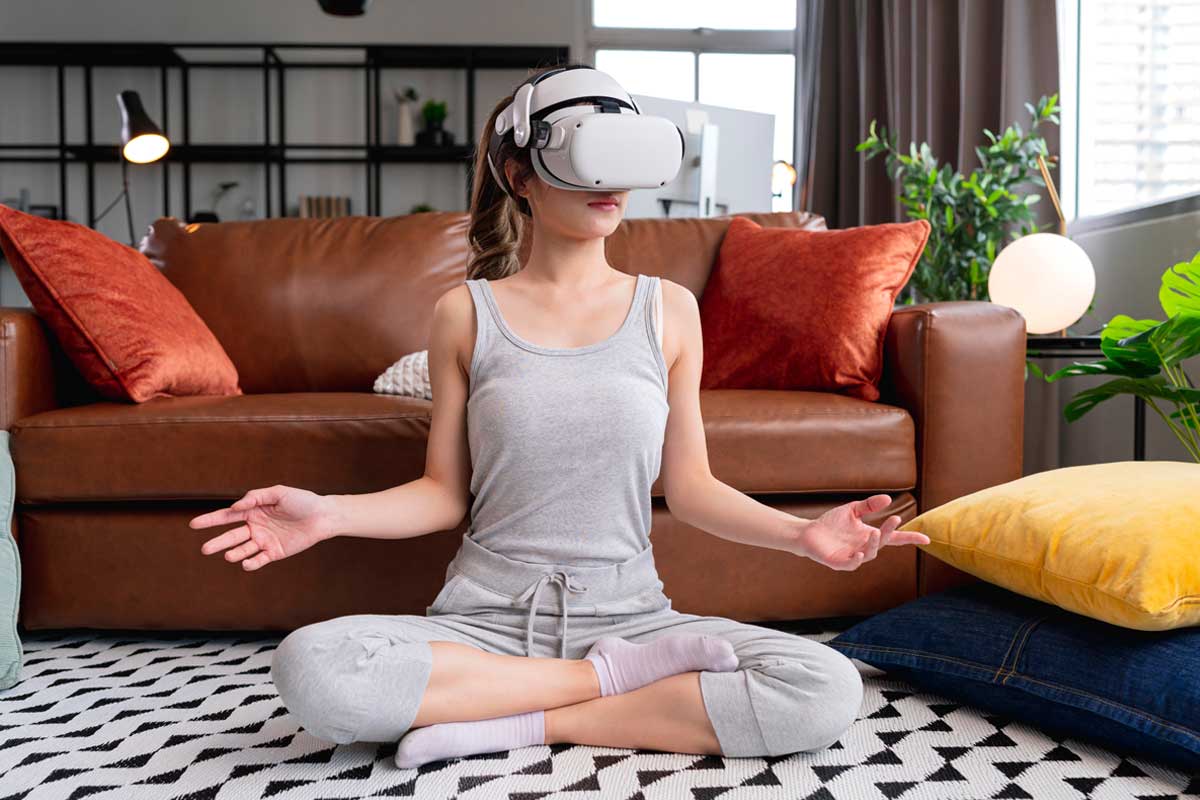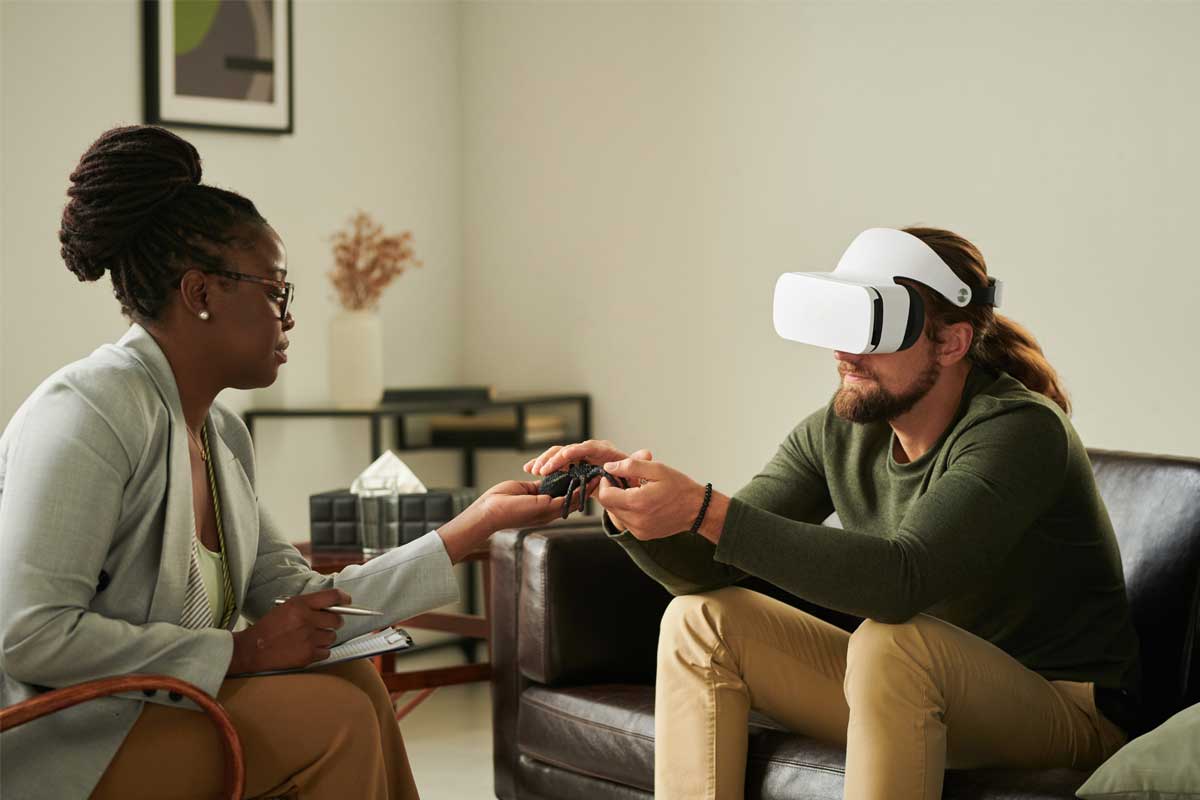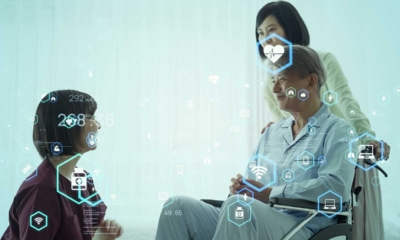
Augmented reality (AR) and Virtual reality (VR) technologies have always held a foothold in entertainment as they create immersive environments for users to get lost in. The healthcare industry has noted AR and VR applications and is now using the same approach to diagnose and treat mental health illnesses.
Roughly one in four American adults suffer from a mental illness, making mental health one of the fastest-growing illnesses plaguing our society1. From talk therapy to cognitive behavioral therapy, options to treat and support the symptoms of anxiety, depression, stress, and sleep disorders are abundant, with innovations constantly being released.
While healthcare organizations are already using artificial intelligence (AI), such as AI voice analysis for disease detection and remote patient monitoring, AR and VR are two AI-based tools that are increasingly prominent regarding therapeutic experiences.
In this article, we will detail how AR and VR treat symptoms of mental illness, along with real-life applications.
How AR and VR Treat Symptoms of Mental Illness
Mental illness symptoms vary widely from physical pain like headaches to mental fatigue, brain fog, disordered sleeping, and more. AR and VR work to reduce these symptoms and provide effective therapeutic treatments for the overall illness.
Exposure therapy
In cases of post-traumatic stress disorder (PTSD), virtual reality can create simulated environments to help patients increase exposure to phobias or traumatic environments. Exposure therapy works to gradually introduce and expose an individual to the things they are afraid of with the eventual goal of reducing that fear. Through this immersive exposure, VR and AR projects visual and auditory environments to encourage patients that they’re in a safe place while exposing them to their fear. Research showed a 66% and 90% success rate when virtual reality therapy was combined with cognitive behavioral therapy2.
Mindfulness
For social anxiety or panic disorders, VR can provide mindful and meditative stress reduction. Through guided visualization, calming music, or guided breathwork, patients experiencing an anxiety attack or panic attack can slow their breathing, calm their heart rate, and work themselves down.
Pain Reduction
VR also immerses patients in different environments to distract them from chronic pain. This reduction in physical pain can be morale-boosting for patients suffering from serious mental illnesses and allow them to continue other treatments. For patients dealing with pain, traveling to smart buildings equipped with VR tools might not be possible, so at-home technology is best.
Real-Life Applications
AI-enhanced wearables like fitness trackers have gained significant, steady adoption for the last few years, and VR and AR technology could be the next quickly adopted health tool. Take a look at how companies are developing and launching revolutionary products.
Apple’s Vision Pro Headset
As one of the forefront pioneers in VR, Apple has long been testing and developing different virtual reality headsets. One of their rumored mental health headsets, the Vision Pro, is thought to detect different levels of anxiety, depression, PTSD, and other types of stress 3.
XR Virtual Reality Therapy
In the comfort of your own home, XR Health promises drug-free, personalized mental health therapy through VR. Leveraging a cutting-edge headset, therapists using video and talk therapy will deliver through confronting experiences using different modalities such as cognitive behavioral therapy, acceptance and commitment, therapy, and psychodynamic therapies 4.
PsyTech VR
Ideal for mindfulness practices, meditations, and an overall reduction in anxiety and stress, psyTech VR also uses cutting-edge AR and VR technology to build therapeutic immersive experiences. It’s designed to provide interventions for anxiety disorders, phobias, and PTSD 5.

Challenges of AR and VR for Mental Health
The future applications of AR and VR in healthcare and mental health are exciting, but like many new AI technologies, there are concerns around ethical considerations, safety, costs, and privacy.
Privacy
As consumers increasingly care about data, privacy, and security, it’s important that AR and VR technologies for mental health protect sensitive healthcare data. Also, as data is aggregated at scale to identify trends and patterns, anonymity should be considered to protect the identity of individuals participating in these newer technologies.
Safety
Like any new therapy treatment, thorough research must be done before releasing AR and VR tools to the public for mental health treatment. Mental health patients often experience up and down episodes; AR and VR mustn’t be more harmful than helpful. All exposure should be thoroughly evaluated and done under the care of trained professionals.
Costs
AR and VR technology for mental health will undoubtedly be expensive, such as Apple’s estimated $3,500 headset. This significant barrier to entry could create socioeconomic disparities and biased data sets, leaving some patients without critical treatments in the future. However, as more AR and VR technologies are released, prices will go down, and technology will be more affordable for the average consumer.
The Future of AR/VR for Mental Health
Before a mental health issue can even start to be treated, it has to be formally diagnosed, yet mental health issues are often called the “silent disease.” The vast majority of mental illnesses go untreated, as proper diagnosis can be difficult to get. In the future, research is hopeful that AR and VR can also be used for faster, more accurate patient diagnosis before treatment starts. AI is already showing its effectiveness in healthcare diagnosis.
Also, as more companies develop AR and VR technology, cost barriers will reduce, and practitioners will feel more comfortable recommending these innovative technologies in conjunction with other treatments. New enhancements, such as voice commands or wearable solutions, will make it even easier for all patients to use AR and VR technology in a way that makes sense for them.
How Ambiq Contributes
As more and more people suffer from depression, sleep disorders, and anxiety, innovative technologies will create a better quality of life, reduce pain and suffering, and offer new hope for patients. Ambiq’s ultra-low power System-on-Chips (SoCs) allow battery-powered, energy-efficient IoT devices to operate at optimal battery life and performance, extending their usage. Already, Ambiq has enabled over 230 million endpoint devices capable of giving users active control over their health. These battery-powered endpoint devices could last days, weeks, and even months on a single charge. Learn more about different applications Ambiq can help here.
Sources
1 Mental Health Disorder Statistics | 2023
2 Virtual reality exposure therapy for post-traumatic stress disorder (PTSD): a meta-analysis | August 19, 2019
3 Apple Is Considering Treating Mental Health With $3,500 Vision Pro Augmented Reality Headset, Report Says | October 25, 2023
4 XRHealth | 2023
5 PsyTech | 2023


